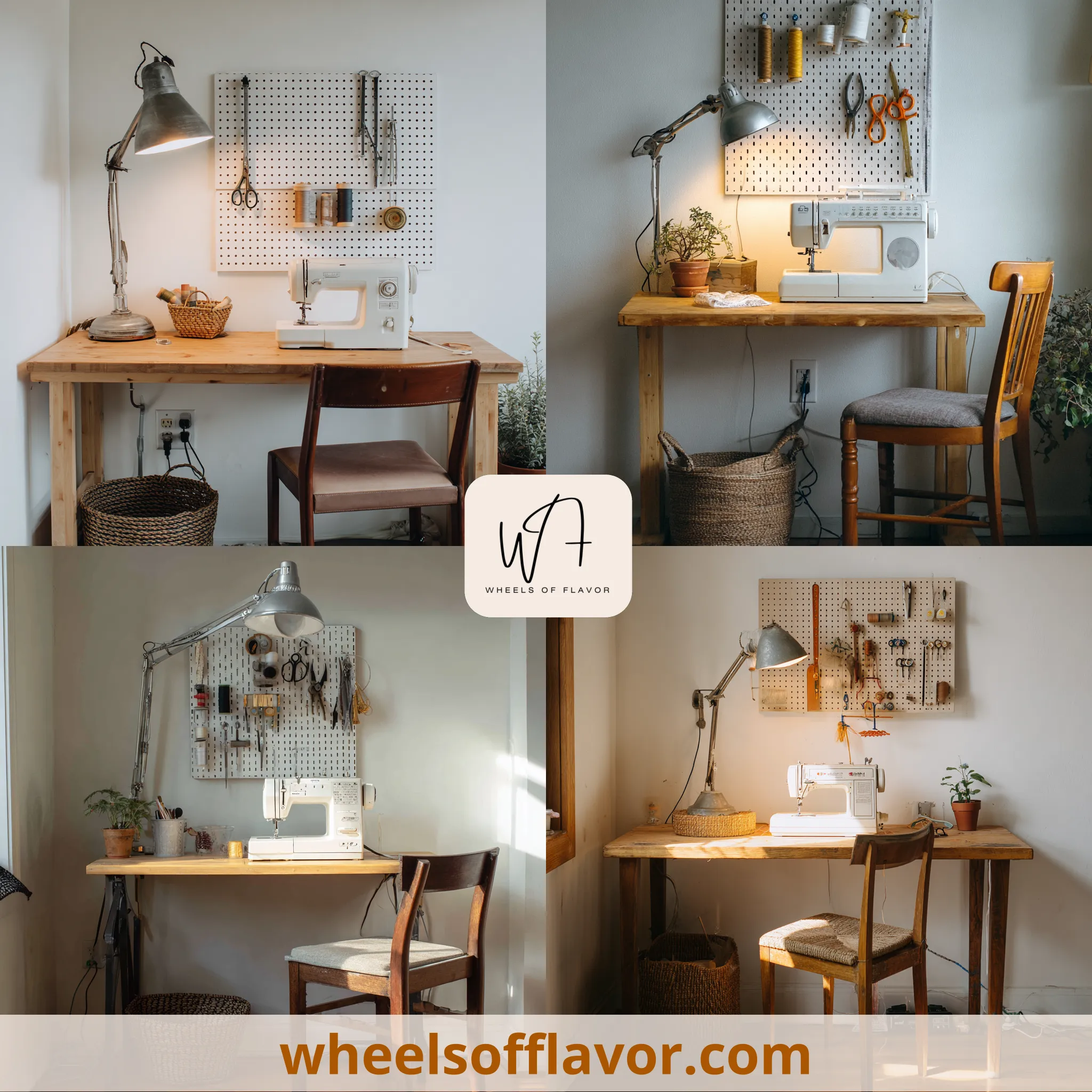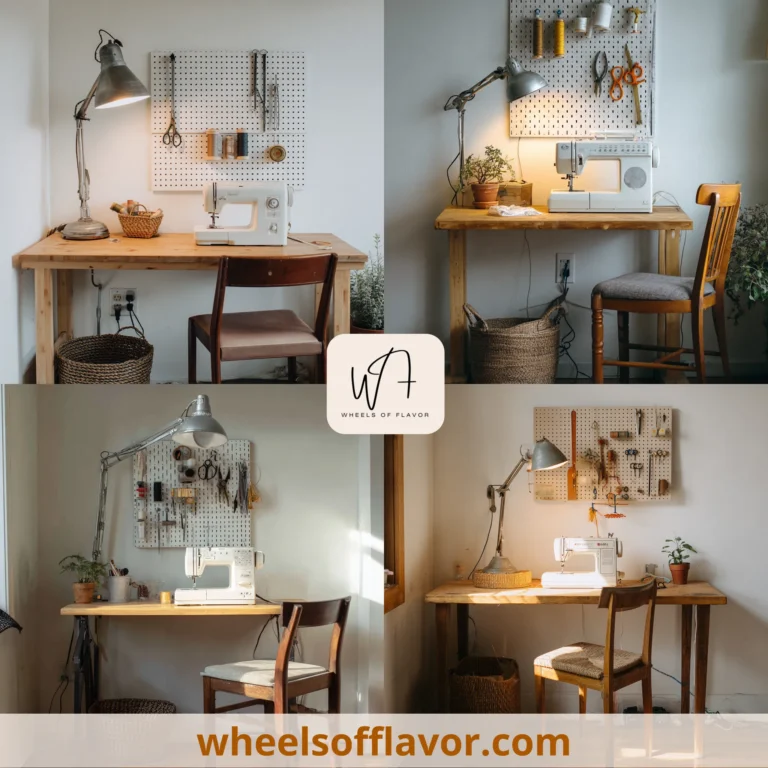
Creating a dedicated sewing station can completely transform your crafting experience, turning a chaotic hobby into an organized, enjoyable retreat. Whether you’re a beginner seamstress or a seasoned quilter, having a well-designed space for your sewing projects boosts productivity and creativity. Imagine no more lost needles, tangled threads, or fabric piles taking over your living room—instead, you’ll have everything at your fingertips in a functional, inspiring setup. This article explores practical and budget-friendly sewing station ideas to help you carve out your perfect nook, no matter your space constraints. From compact corners to multi-functional rooms, we’ll guide you through planning, organizing, and personalizing your station. A good sewing area isn’t just about storage; it’s about fostering a love for your craft. By investing time in setting it up, you’ll save hours in the long run and enjoy the process more. Let’s dive into how you can create a sewing station that reflects your style and meets your needs. For more home organization tips, check out this guide from The Spruce on small-space solutions.
Creative Sewing Station Ideas for Small Spaces
Limited room doesn't mean you have to sacrifice your sewing dreams. With clever sewing station ideas, even the tiniest nook can become a crafting haven. Start by assessing underutilized areas like closets, corners, or wall niches. A fold-down desk attached to a wall is a game-changer—it can be tucked away when not in use, saving precious floor space. Look for furniture with dual purposes, such as a storage ottoman that holds supplies and serves as seating. Vertical storage is key: install pegboards above your workspace to hang scissors, rulers, and thread spools, keeping them visible and accessible. Magnetic strips can hold metal tools like needles and bobbins, reducing clutter. If you have a closet, consider converting it into a mini sewing station by adding a small table and shelves. For renters or those who move often, a rolling cart with drawers offers flexibility—wheel it out for projects and store it in a closet afterward. Lighting is crucial in small spaces; add an adjustable LED lamp to avoid eye strain. Remember, the goal is efficiency without feeling cramped. Incorporate personal touches like a small pinboard for inspiration or a favorite color scheme to make the space inviting. These sewing station ideas prove that with a bit of creativity, anyone can enjoy a functional crafting area. For more DIY inspiration, visit https://wheelsoflavor.com/diy-decor-tips.
Budget-Friendly Sewing Station Ideas Using Repurposed Items
Building a sewing station doesn't have to break the bank. With these budget-friendly sewing station ideas, you can upcycle everyday items into practical organizers. Start with old furniture: a discarded desk or table can be sanded and painted to match your decor. Bookshelves are versatile—use them to store fabric bins, books, and machines. Mason jars make excellent containers for buttons, beads, and threads; attach their lids to the underside of a shelf for easy access. Pallet wood can be transformed into a rustic thread holder or a wall-mounted organizer. For cutting surfaces, consider a large, smooth board placed on top of a table—it's cheaper than buying a dedicated cutting mat. Thrift stores are goldmines for baskets and drawers that can hold patterns and tools. If you're handy, build a simple PVC pipe rack to hang fabrics vertically, saving space and keeping them wrinkle-free. Don't overlook digital resources: print free patterns or templates to label your storage. To keep costs low, prioritize essentials like good lighting and a comfortable chair, which you might already own. A DIY approach not only saves money but also adds a personal touch to your sewing station ideas. By repurposing items, you contribute to sustainability while creating a unique space. Share your projects on communities like Pinterest for more ideas and support.
Organized Sewing Station Ideas for Enhanced Productivity
An organized sewing station is the backbone of efficient crafting. These sewing station ideas focus on systems that streamline your workflow and reduce frustration. Begin with zoning: designate areas for cutting, sewing, and pressing to avoid交叉-contamination of tasks. Invest in modular storage like stackable bins or drawers labeled by category—e.g., 'threads,' 'notions,' 'patterns.' Use clear containers so you can see contents at a glance, minimizing search time. A pegboard system is invaluable; customize it with hooks and shelves for frequently used tools. For thread management, opt for a rack that displays colors visibly, preventing duplicates. Cable organizers keep machine cords tidy, reducing tripping hazards. Consider a height-adjustable table to alternate between sitting and standing, promoting better posture. If you have multiple machines, like a serger and regular sewing machine, arrange them side-by-side with enough clearance for fabric flow. Incorporate a trash bin nearby for scraps to maintain cleanliness. Digital tools can help too—use apps to catalog your stash or set reminders for maintenance. Regularly declutter by donating unused supplies; this keeps your sewing station ideas fresh and functional. An organized space not only boosts productivity but also makes sewing more enjoyable. For advanced tips, refer to organizing experts like Marie Kondo's principles applied to craft rooms.
Stylish Sewing Station Ideas to Match Your Home Decor
Your sewing station should be as beautiful as it is functional. These stylish sewing station ideas blend practicality with aesthetics, ensuring your crafting corner complements your home's vibe. Start by choosing a color palette that harmonizes with your room—soft neutrals for a calm feel or bold hues for energy. Furniture with clean lines, like a mid-century modern desk, can double as a statement piece. Incorporate textiles: use a pretty fabric to cover a bulletin board or make curtains for an open shelf. Lighting fixtures aren't just functional; a vintage-inspired lamp adds charm while illuminating your work. For storage, wicker baskets or decorative boxes hide supplies elegantly. If you have a dedicated room, consider wallpaper or a accent wall to define the space. Personalize with art, family photos, or plants to create an inspiring atmosphere. Even small touches, like a custom-made pin cushion or a quilted chair cover, elevate the look. Remember, your sewing station ideas should reflect your personality—whether it's rustic, minimalist, or bohemian. This approach turns a utilitarian area into a cherished part of your home. For more on integrating decor styles, explore https://wheelsoflavor.com/room-decor-ideas.
Conclusion
In summary, these sewing station ideas demonstrate that with a bit of planning, anyone can create a dedicated space that enhances their crafting journey. From maximizing small areas with vertical storage to repurposing items on a budget, the key is to tailor the setup to your needs and style. An organized station not only saves time but also fuels creativity, making sewing a more joyful and sustainable hobby. As you implement these ideas, remember that flexibility is important—your needs may evolve, so choose adaptable solutions. Looking ahead, consider incorporating smart technology, like voice-activated lighting or digital pattern libraries, to future-proof your station. The goal is to build a sanctuary where you can unwind and create. Start small, perhaps with one corner, and gradually expand as you discover what works best. Share your progress with fellow crafters to inspire others. Ultimately, a well-designed sewing station is an investment in your passion, promising years of productive and pleasurable sewing.
Frequently Asked Questions
Q: What are the essential elements for a basic sewing station?
A basic sewing station should include a stable table or desk for your machine, good lighting to reduce eye strain, comfortable seating, and organized storage for threads, needles, and fabrics. Start with a pegboard for tools and bins for supplies to keep everything accessible.
Q: How can I create a sewing station in a small apartment?
Use multi-functional furniture like a fold-down desk or a rolling cart that can be stored away. Maximize vertical space with wall-mounted shelves and pegboards. Choose compact storage solutions, and consider a closet conversion to keep the area tidy without taking up much room.
Q: What's the best way to organize sewing threads and fabrics?
Organize threads by color on a rack or in clear boxes for easy visibility. For fabrics, fold them neatly and store in bins or on shelves, sorted by type or project. Label everything to quickly find what you need, and regularly declutter to maintain order.

